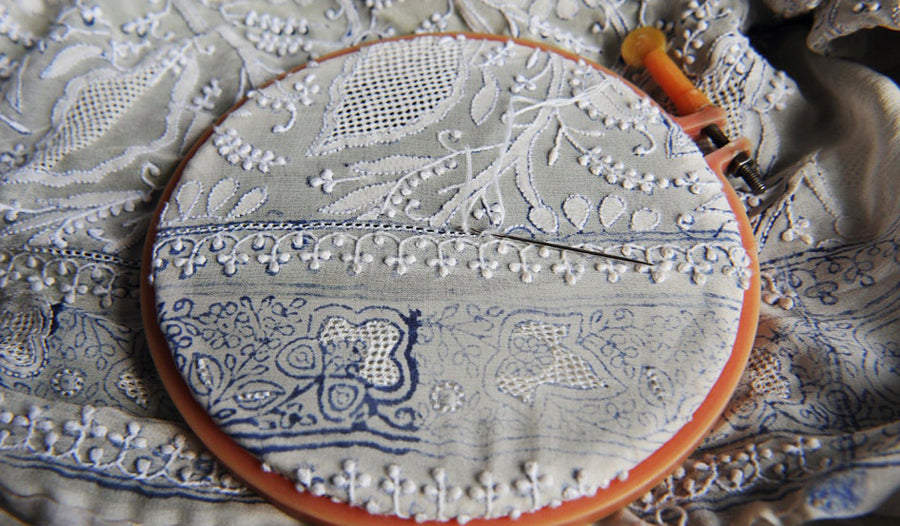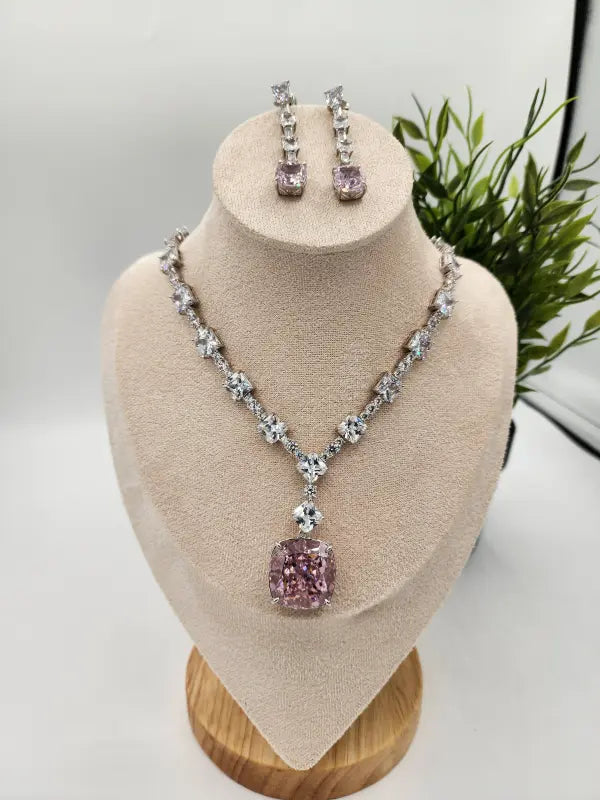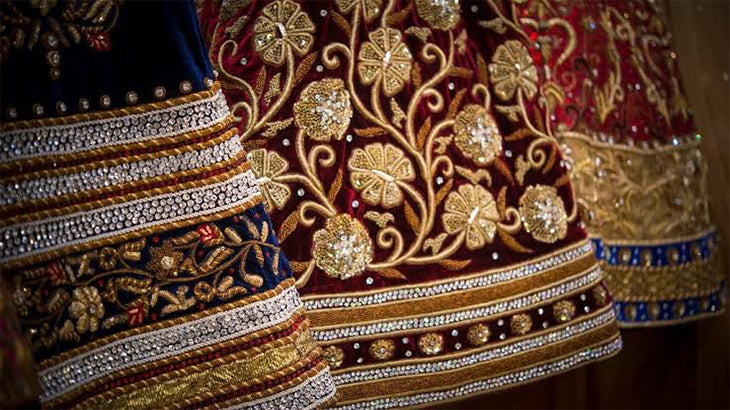Chikankari, a revered hand embroidery style, showcases India's rich cultural heritage through its intricate craftsmanship and delicate designs. This art form, predominantly associated with royalty and Nawabi culture, has evolved from its Persian origins into a distinct and enchanting style in Lucknow, Uttar Pradesh. This guide explores the essence of Chikankari, from its historical roots to modern adaptations, offering insights into its enduring charm.
Origins of Chikankari: A Historical Tapestry

The story of Chikankari begins with the Mughals and their admiration for fine artisanship. During the reign of Emperor Jahangir and his wife, Empress Noor Jehan, Chikankari was introduced to India. Noor Jehan, captivated by Persian embroidery, brought skilled artisans from Persia to Awadh, now Lucknow, where the craft took root. The Mughal nobility's appreciation transformed Chikankari into a treasured part of the region's cultural legacy. This blend of Persian aesthetics with local craftsmanship exemplifies the harmonious evolution of this exquisite art form.
Materials and Techniques: The Craftsmanship Behind Chikankari
Chikankari is performed on soft fabrics like voile, cotton, muslin, chiffon, georgette, or tussar silk. The fabric is stretched on a wooden frame, and the design is traced before embroidery begins. Traditionally, white cotton threads, known as taar, were used, but modern artisans often incorporate colored resham (silk) threads to enhance the design's vibrancy.
Key stitches in Chikankari include:
- Taipchi: A running stitch forming the base of many patterns.
- Pechni: Shadow work that adds depth and texture.
- Murri: Raised dots that create a unique texture.
- Jali: A net-like pattern providing intricate detail.
- Hool: Eyelet stitches adding elegance.
These stitches combine to produce the delicate, dainty finish characteristic of Chikankari.
Design Inspirations: Nature and Tradition Intertwined
Chikankari designs are inspired by nature, featuring motifs such as floral patterns, vines, paisleys, and geometric shapes. Artisans either trace these designs onto the fabric or create them freehand, resulting in unique, one-of-a-kind pieces. The timeless beauty of Chikankari lies in its ability to blend traditional patterns with contemporary fashion sensibilities, making it a favorite among designers and fashion enthusiasts.
Modern Adaptations: Chikankari in Contemporary Fashion
Chikankari's appeal extends beyond traditional garments. Modern adaptations include sarees, kurtas, tops, skirts, shararas, and palazzos, as well as accessories like handbags, juttis, clutches, and home furnishings. The art form has seamlessly integrated into summer fashion, offering versatile options for various occasions.
How to do Shopping for Chikankari: A Buyer’s Guide
When purchasing Chikankari garments, consider the following tips to ensure authenticity and quality:
- Material and Workmanship: The cost varies based on fabric and intricacy. Fine thread work is preferable, and prices range from a few hundred to several thousand rupees.
- Authenticity Check: Verify if the embroidery is handmade by inspecting the rear side for thicker threads and loose ends. Be cautious of machine-made imitations.
- Budgeting: Set a budget and communicate it to the shopkeeper to avoid overspending. Shops in Hazratganj and Aminabad offer a wide range of options and in-house design teams for personalized choices.
- Modern Options: Brands like Manvi offer updated Chikankari designs, including summer dresses, tops, and pants with a relaxed aesthetic.
Caring for Chikankari: Maintaining Its Beauty
Chikankari requires gentle care to preserve its delicate threads and intricate designs:
- Regular Maintenance: Check for and mend loose threads promptly.
- Cleaning: Hand Wash or dry clean as needed. Air dry in the shade to prevent fabric damage.
- Ironing: Iron garments inside out to protect the embroidery.
With proper care, Chikankari pieces will retain their elegance and charm, continuing to be a cherished part of your wardrobe.
Conclusion: Chikankari’s Enduring Legacy
Chikankari embodies a rich blend of historical significance, exquisite craftsmanship, and modern appeal. From its Mughal origins to its contemporary adaptations, this art form remains a testament to India's cultural heritage and artistic prowess. Whether you're drawn to traditional designs or modern updates, Chikankari offers timeless elegance and beauty, ensuring its place in fashion and culture for generations to come.
FAQs
- What is Chikankari? Chikankari is a traditional hand embroidery style from Lucknow, India, known for its intricate patterns and delicate craftsmanship, typically done with white cotton threads on pastel fabrics.
- What is the history behind Chikankari? Chikankari originated during the Mughal era when Empress Noor Jehan introduced Persian embroidery techniques to the Awadh region. It developed into a distinct art form in Lucknow, blending Persian and local craftsmanship.
- What fabrics are used in Chikankari?Chikankari is commonly done on soft fabrics like voile, cotton, muslin, chiffon, georgette, and tussar silk.
- How can I identify authentic Chikankari? Look for fine threadwork with loose ends on the back of the fabric. Genuine Chikankari features delicate, detailed embroidery, while machine-made pieces may lack this intricacy.
- How should I care for Chikankari garments? Handwash or dry clean Chikankari items, air dry them in the shade, and iron them inside out to preserve the embroidery. Regularly check for and repair loose threads.




